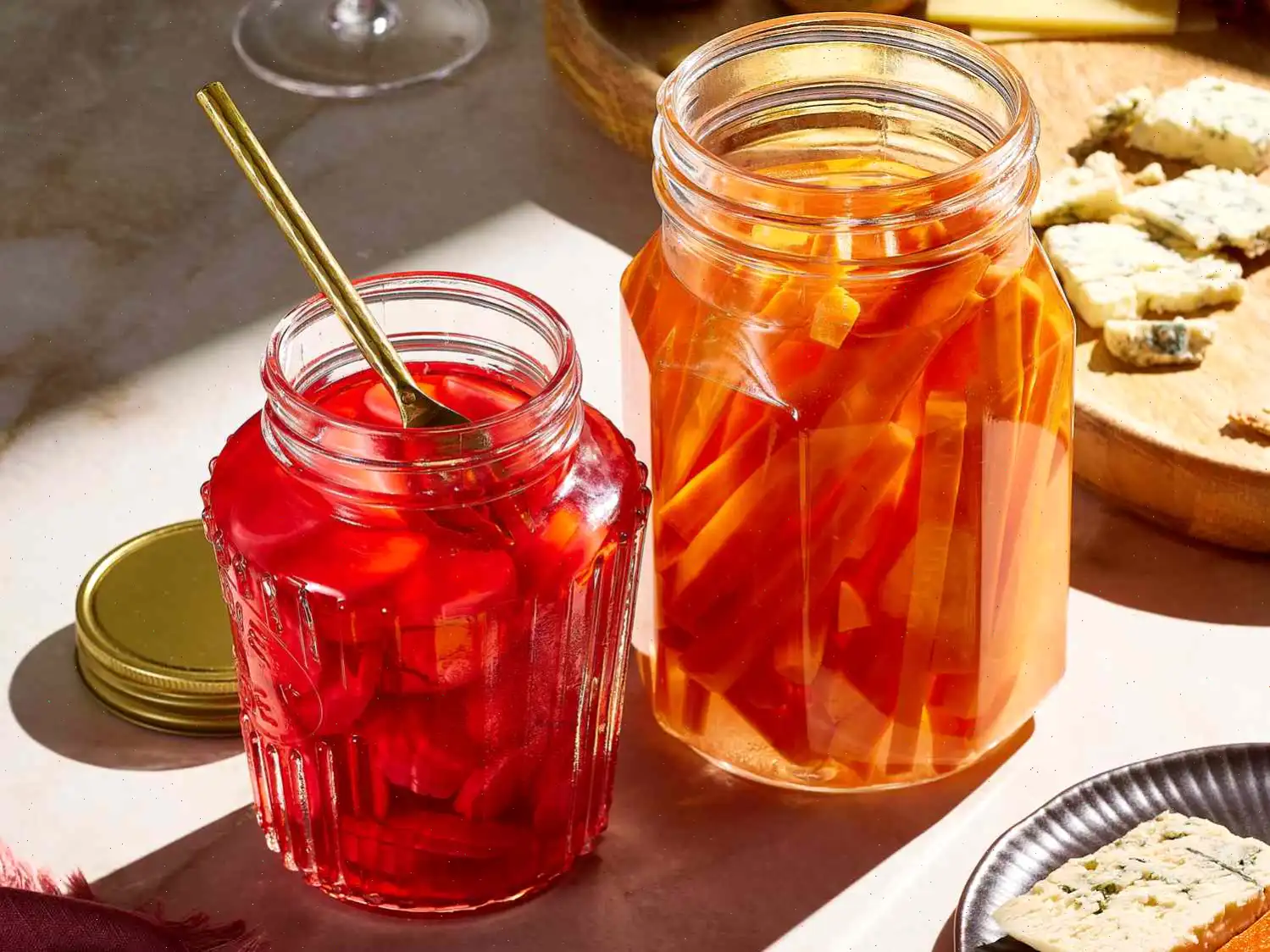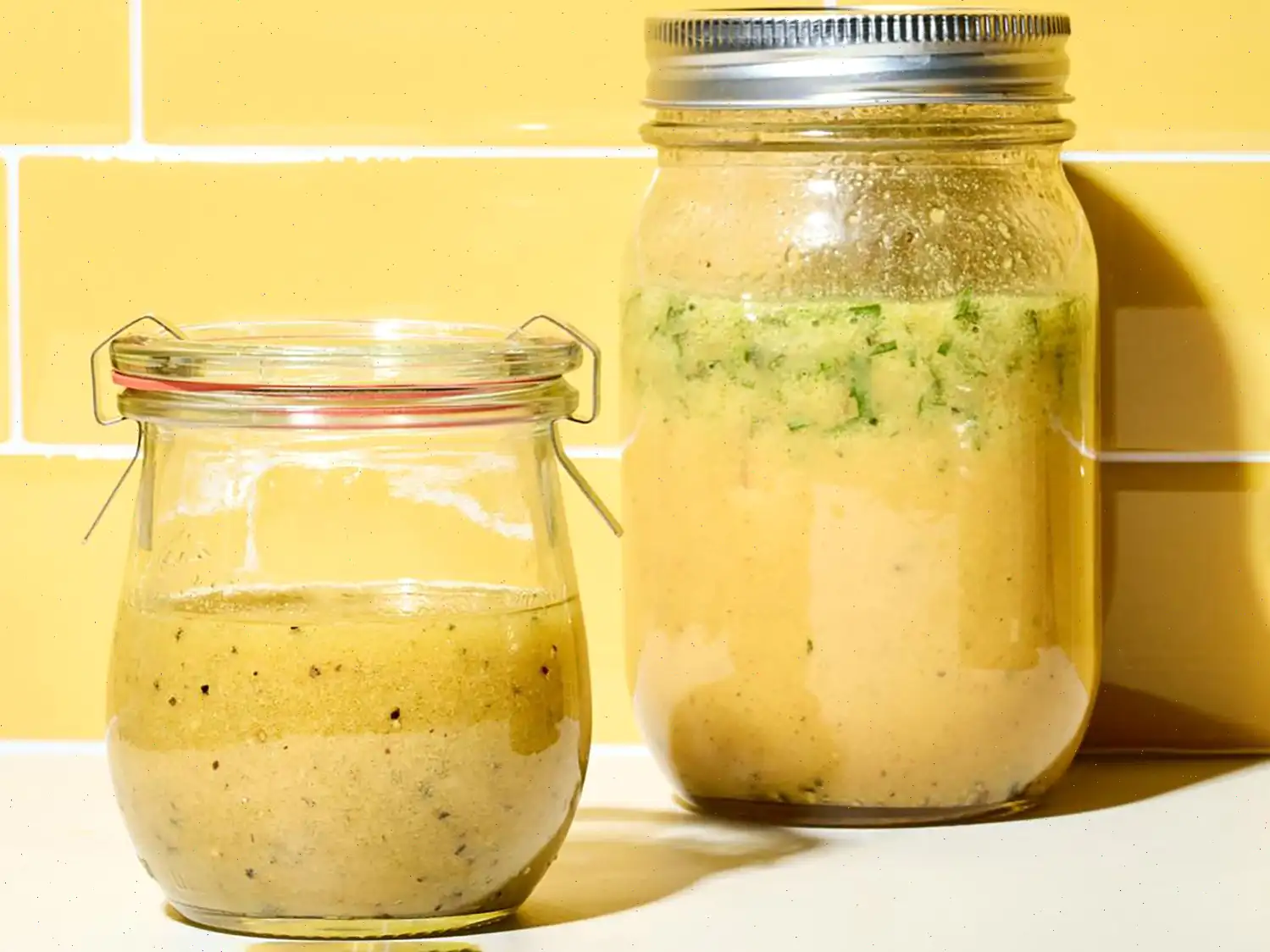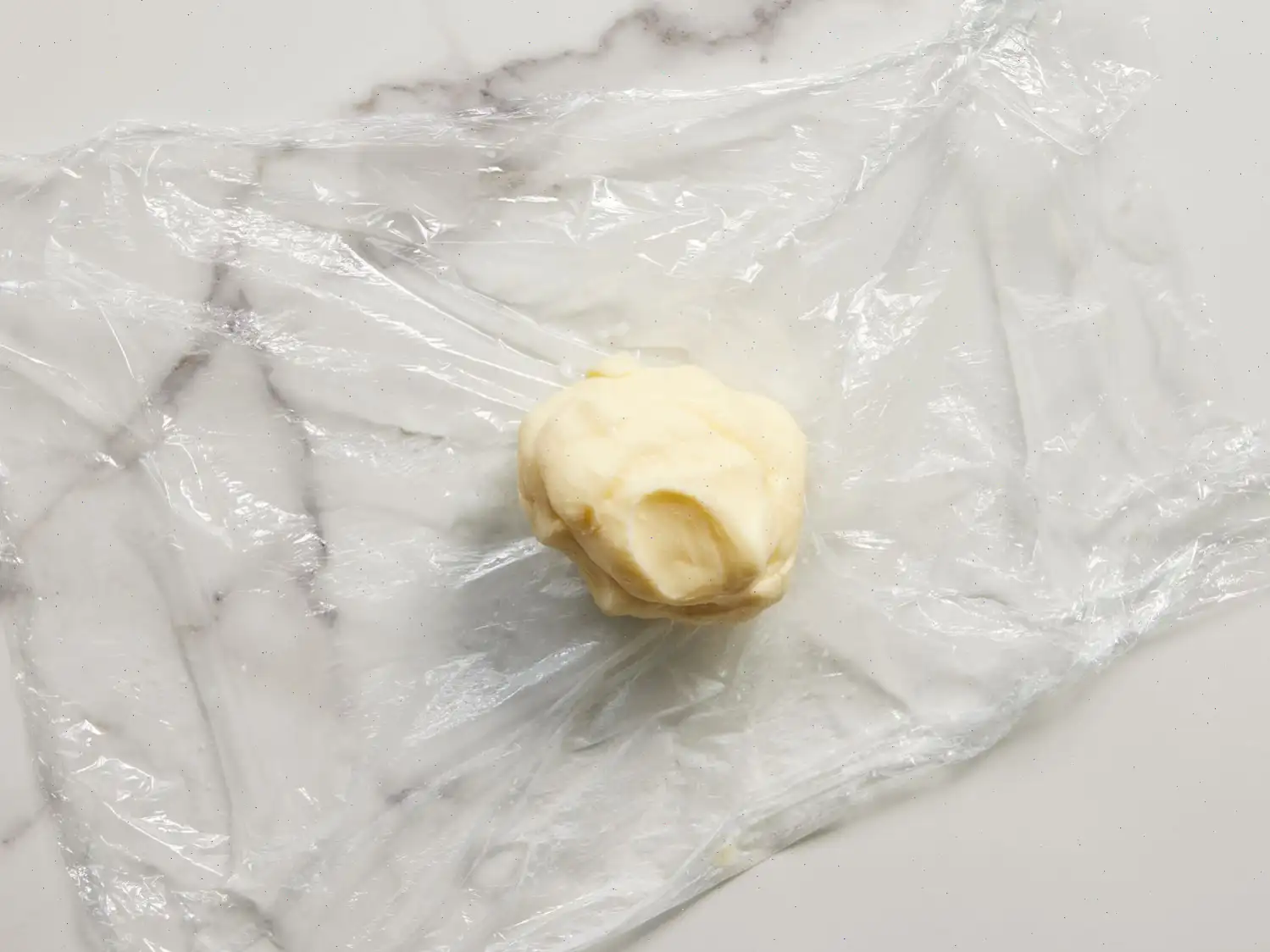
Quick-Pickled Carrots and Radishes Recipe
Pickled Carrots and Radishes
Ingredients
- 1 pound carrots, peeled and cut into thin sticks
- 1 pound radishes, trimmed and sliced
- 1 1/2 cups white vinegar or cider vinegar
- 1 1/2 cups water
- 2 tablespoons sugar
- 1 teaspoon sea salt
Directions
Step 1: Place the vegetables into two separate 1-quart screw-top jars, with carrots in one jar and radishes in the other.
Step 2: In a medium saucepan, combine the vinegar, water, sugar, and salt. Heat over medium heat, stirring occasionally until the salt and sugar dissolve completely.
Step 3: Once the mixture comes to a simmer, remove the saucepan from the heat.
Step 4: Pour the hot liquid over the vegetables in the jars. Press the vegetables down to make sure they are fully submerged. Each jar should receive about half of the liquid.
Step 5: Secure the lids tightly on the jars and shake them gently to combine the ingredients.
Step 6: Refrigerate the jars for at least 4 hours, but they can be stored for up to 3 weeks for optimal flavor.
Nutrition Facts
| Nutrition Facts | Per Serving |
|---|---|
| Calories | 17 |
| Total Fat | 0g |
| Saturated Fat | 0g |
| Cholesterol | 0mg |
| Sodium | 108mg |
| Total Carbohydrate | 3g |
| Dietary Fiber | 1g |
| Total Sugars | 2g |
| Protein | 0g |
| Vitamin C | 3mg |
| Calcium | 12mg |
| Iron | 0mg |
| Potassium | 99mg |
* Percent Daily Values are based on a 2,000-calorie diet. Your daily values may be higher or lower depending on your calorie needs.
The Story Behind Quick-Pickled Carrots and Radishes
Quick-pickled vegetables, such as carrots and radishes, have a rich culinary history that dates back centuries. Pickling was originally developed as a method to preserve fresh produce before the invention of refrigeration. In Europe and Asia, root vegetables like carrots and radishes were often preserved in vinegar brines to last through harsh winters. The quick-pickling method, unlike traditional long-term fermentation, became popular in the 20th century as home cooks sought fast and convenient ways to enjoy the tangy, crisp flavor of pickled vegetables without waiting weeks for the fermentation process.
Regional Variations and Unique Twists
While quick pickles are widely enjoyed across the globe, regional interpretations vary. In the American South, sugar is often added to the vinegar brine to create a sweet-and-sour balance, while Japanese recipes may include rice vinegar and a touch of mirin for a milder, umami-rich flavor. In Mexico, pickled carrots and radishes, or "escabeche," are often spiced with chili and herbs, adding warmth and complexity to the tangy crunch. These regional differences highlight how simple ingredients can reflect cultural taste preferences while maintaining the essence of pickling.
How They Differ from Similar Dishes
Quick-pickled carrots and radishes differ from traditional fermented pickles, such as kimchi or sauerkraut, in preparation, flavor, and texture. Fermented pickles rely on natural bacteria to develop complex, tangy flavors over weeks, while quick pickles achieve a similar acidic taste in hours using vinegar. Compared to canned or store-bought pickles, these quick pickles retain a firmer texture and fresher vegetable flavor, making them ideal for adding a crisp, vibrant touch to salads, sandwiches, or cheese boards.
Where They Are Commonly Served
These pickled vegetables are versatile and commonly served as appetizers, side dishes, or condiments. They are a staple on charcuterie boards, complementing cheeses, cured meats, and crackers. They also pair well with tacos, grilled meats, or roasted vegetables, adding brightness and acidity that balances rich flavors. Many restaurants now offer quick pickles as a garnish or accompaniment to elevate simple dishes with a refreshing crunch.
Interesting Facts
- Quick pickling preserves the natural color of vegetables, making them visually appealing for presentation.
- Pickled radishes and carrots are rich in vitamin C and antioxidants, offering a nutritious snack in addition to flavor.
- The jars of pickled vegetables can last up to three weeks in the refrigerator, allowing for easy meal prep.
- In some cultures, pickled vegetables are believed to aid digestion and support gut health due to their acidic content.
- The tangy flavor can be customized with spices, herbs, or sweeteners to suit individual taste preferences, demonstrating the versatility of this simple culinary technique.








